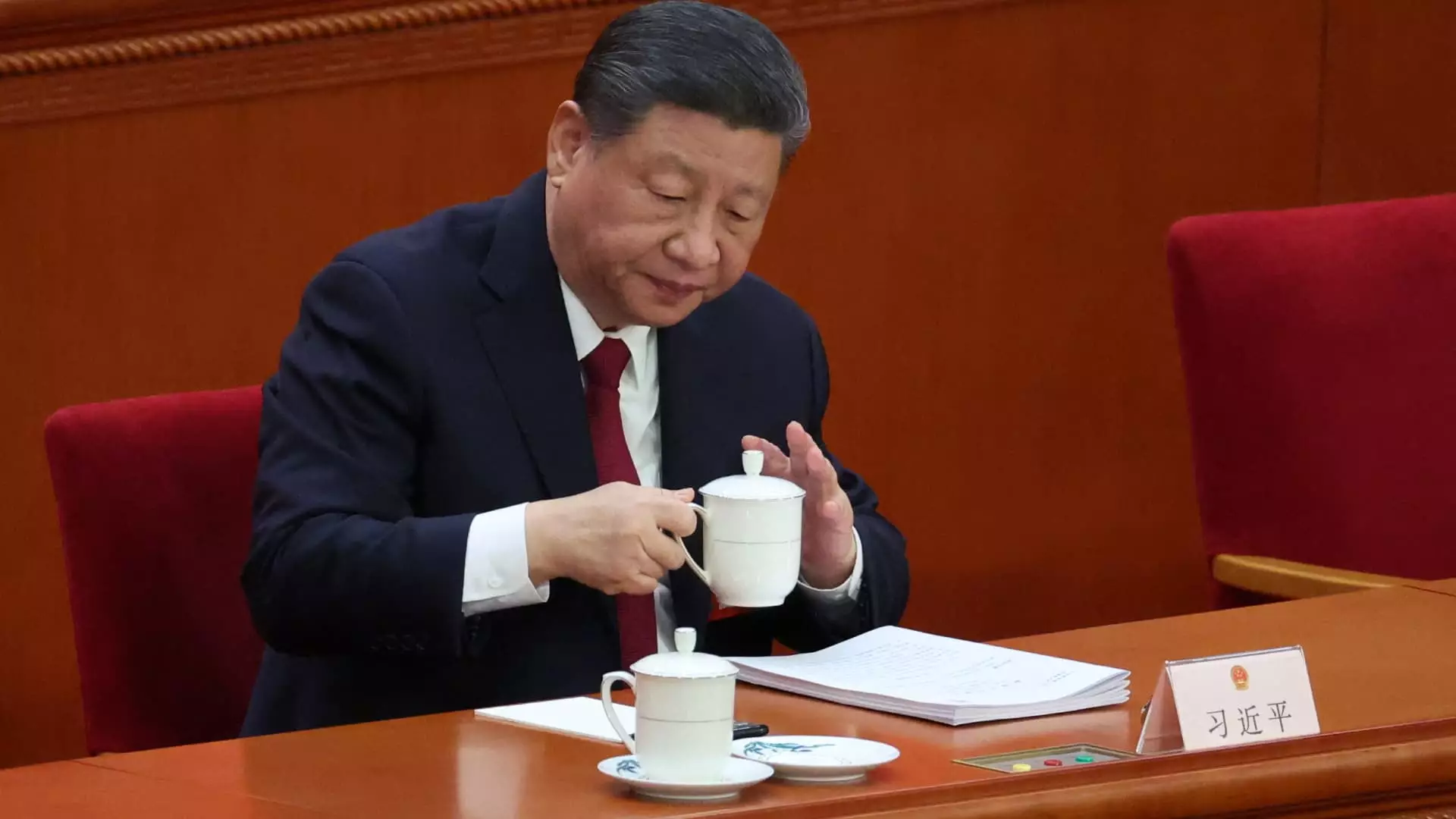As the world’s second-largest economy grapples with a plethora of external shocks, there emerges a pressing need for proactive measures to safeguard its businesses. Recently, President Xi Jinping’s convened meeting of the Politburo highlighted China’s commitment to provide targeted support to industries that are feeling the pinch of escalating trade tensions and tariffs, particularly with the United States. These discussions reflect a climate of uncertainty that has compelled China to reevaluate its economic strategies and adapt promptly to protect its growth trajectory.
The global economic landscape is indeed tumultuous, with mounting tariffs leading to substantial pressure on major industries. This reality is starkly illustrated by Wall Street banks adjusting their GDP outlook for China, indicating a downturn in anticipated economic performance. Despite an official growth target of “around 5%” initiated back in March, recent developments have made this goal seem increasingly ambitious. This scenario raises the question: can resolute policy measures withstand the onslaught of external pressures?
The Politburo’s Shift: A Reflection of Urgency
The recent Politburo meeting was clearly a response to the growing urgency surrounding the economic stability of China. Despite the government’s previous insistence on a balanced approach to growth versus debt reduction, the tone has shifted. There has been an acknowledgment of the necessity for “multiple measures to assist businesses in difficulty.” Financial support initiatives alongside potential interest rate cuts demonstrate the leadership’s willingness to pivot in the face of adversity, albeit in a carefully calculated manner.
The notion of “timely reduction” underscores the movement towards a more flexible policy landscape—one that could be viewed through a center-left liberal lens, which focuses on social welfare while maintaining economic productivity. The government seems poised to alleviate the burdens placed on its industries, suggesting a focus on how precisely these interventions will unfold. However, the question is whether this strategy will materialize in tangible benefits for the average worker and small business owner, or merely serve as a temporary salve for the larger corporate entities.
Shifting Toward Domestic Resilience
As external shocks from international relations complicate the economic environment, a revitalization of domestic markets is critical. The plan to recalibrate from exports towards enhancing domestic sales would potentially strengthen consumer confidence and provide a buffer against fluctuating international demand. Local governments and businesses are already engaging in initiatives to reorient their focus—a move that might herald a transformative chapter in the Chinese economy.
Moreover, the emphasis on increasing the income of middle and lower-income groups resonates with a growing push for equitable growth, calling into question the traditional emphasis on wealth concentration. The notion that boosting services consumption can stimulate overall economic health reflects a deeper understanding of sustainable growth. Still, one must remain skeptical—will these policies bear fruit or will they merely maintain the status quo?
The Role of Technology and Innovation
The Politburo’s reference to enhancing tech development, especially through the integration of artificial intelligence, also carries weight. In the face of malleable international markets, technological innovation could be a double-edged sword. It serves as a potential engine for new industries while simultaneously risking the displacement of existing jobs. As policymakers advocate for innovation, they must keep an eye on the collateral effects on their workforce and the ethos of the labor market.
Experts like Zhiwei Zhang assert that the government does not appear keen on unleashing a massive stimulus, preferring to seek a nuanced understanding of the trade shocks before acting decisively. This cautious approach, while representing a certain prudence, may also be interpreted as a hesitance to enact necessary reforms robust enough to tackle the undercurrents of discontent among the populace.
The anticipated new law aimed at supporting the private sector could signify an important turning point, suggesting a more favorable environment for entrepreneurship and innovation. However, expectations must be tempered; the interplay of national politics, economic policies, and the global market dynamics will ultimately dictate the actual outcomes.
China’s economic future appears caught in a complicated web of aspirations and challenges. Achieving growth amidst external headwinds demands adaptability, resilience, and a forward-thinking mindset that emphasizes innovation while safeguarding the welfare of its citizens. Only time will show whether this precarious balancing act succeeds or falters under the weight of its complexities.

